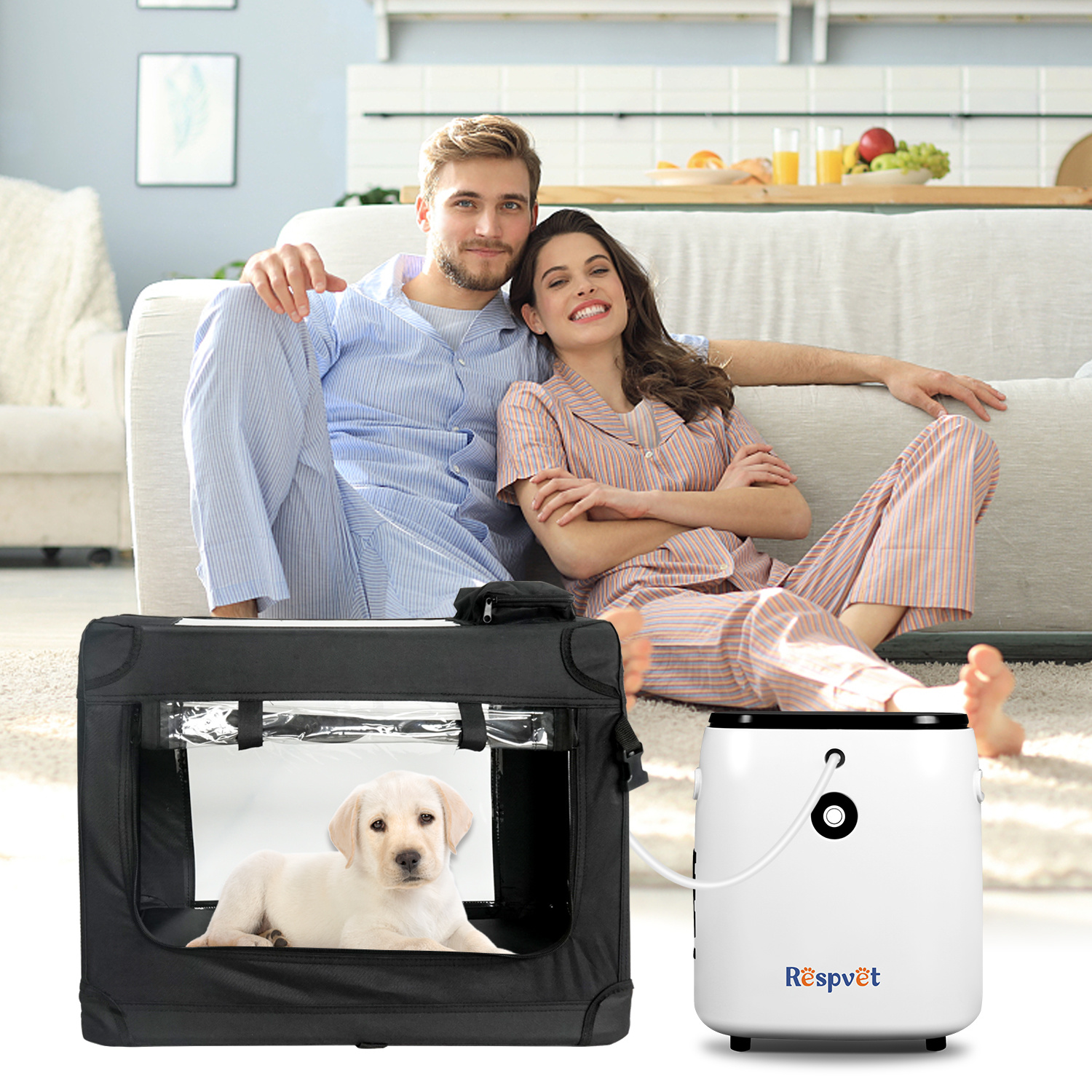How to Set Up a Pet Oxygen Therapy System at Home
Which Pets Need Oxygen Therapy?
Oxygen therapy isn’t just for emergencies—it’s an essential part of managing various chronic and acute conditions in pets. Whether it’s for older animals, flat-faced breeds, pets with heart disease, or post-surgical recovery, providing oxygen can help improve quality of life and even save lives.
Here are common scenarios where oxygen therapy may be recommended:
Senior Pets: Aging leads to slower metabolism and weaker respiratory muscles, increasing oxygen demand.
Flat-faced Breeds: Breeds like French Bulldogs, Pugs, and Boston Terriers often suffer from BOAS, making breathing more difficult.
Heart Disease: Pets with congenital heart defects or valve disorders may experience poor oxygen circulation.
Respiratory Diseases: Conditions like tracheal collapse, pneumonia, bronchitis, and feline asthma.
Post-surgery Recovery: After anesthesia or trauma, oxygen helps stabilize pets faster.
Quick Tip: Cats are known to hide pain. Check for subtle signs like bluish gums, cool paws, or rapid breathing.
Does Your Pet Need an At-Home Oxygen Setup?
Oxygen therapy is generally divided into:
Acute Therapy: For emergencies like respiratory failure. At-home kits may provide temporary help during transport.
Chronic Therapy: For pets with long-term conditions. A home system helps improve comfort and extend life.
Note: Acute cases still require veterinary attention. At-home therapy is supplemental, not a replacement.
Key Considerations Before Starting Home Oxygen Therapy
Yes, it saves money—but requires proper care. Hospital oxygen therapy costs $100–$300 per day. A home system reduces this significantly. However, misuse can be dangerous.
Important: Human oxygen equipment is not pet-friendly. Pets have different breathing patterns and stress responses.
What to watch out for:
Pets may resist the setup—start slow and desensitize.
Humidification is necessary to prevent airway irritation.
Avoid fully sealed boxes—ventilation is critical.
Hidden hazard: Do not use baby tents or plastic bins without airflow—they pose suffocation risks.
How to Build a Complete Pet Oxygen System at Home
Step 1: Choose the Right Method
Mask: Good for short sessions and cooperative dogs.
Box/Chamber: Best for cats or small anxious pets.
Portable Kit: Useful for travel or emergencies.
Nasal Cannula: For professional or clinic use.
Desensitization Tips:
Introduce the setup without oxygen first.
Let your pet sniff and explore.
Increase session time gradually.
Step 2: Build the Full System
You’ll need:
Oxygen Concentrator: Pet-grade, ≥90% purity, 2–5 LPM flow.
Oxygen Box: Right size for your pet, with vents.
Humidifier: Use distilled water and clean daily.
Oxygen Monitor: Keep internal oxygen at 30–50%.
Thermometer/Hygrometer: Avoid overheating, monitor humidity.
Vent Fan or Exhaust Valve: Prevent heat or CO2 buildup.
Oxygen Therapy Safety & Monitoring
Common mistakes to avoid:
Feeding during therapy → choking risk.
Constant high oxygen (>70%) → oxygen toxicity.
Leaving system on all day → dependency risk.
Using CPAP or canned oxygen → dangerous for pets.
Always monitor:
Breathing rate: Dogs 15–30 bpm.
Gum/tongue color: Pink is normal.
Behavior: Watch for distress, lethargy, or restlessness.
Product Recommendation
If your vet recommends oxygen therapy, a proper system helps you care confidently.
We recommend:
Longfian Pet Oxygen System
Quiet, adjustable flow
Compatible with masks, chambers, and portable kits
Can be customized for home or clinic use
Need help setting up? Contact us for a free consultation.
Related news
2025-04-02






